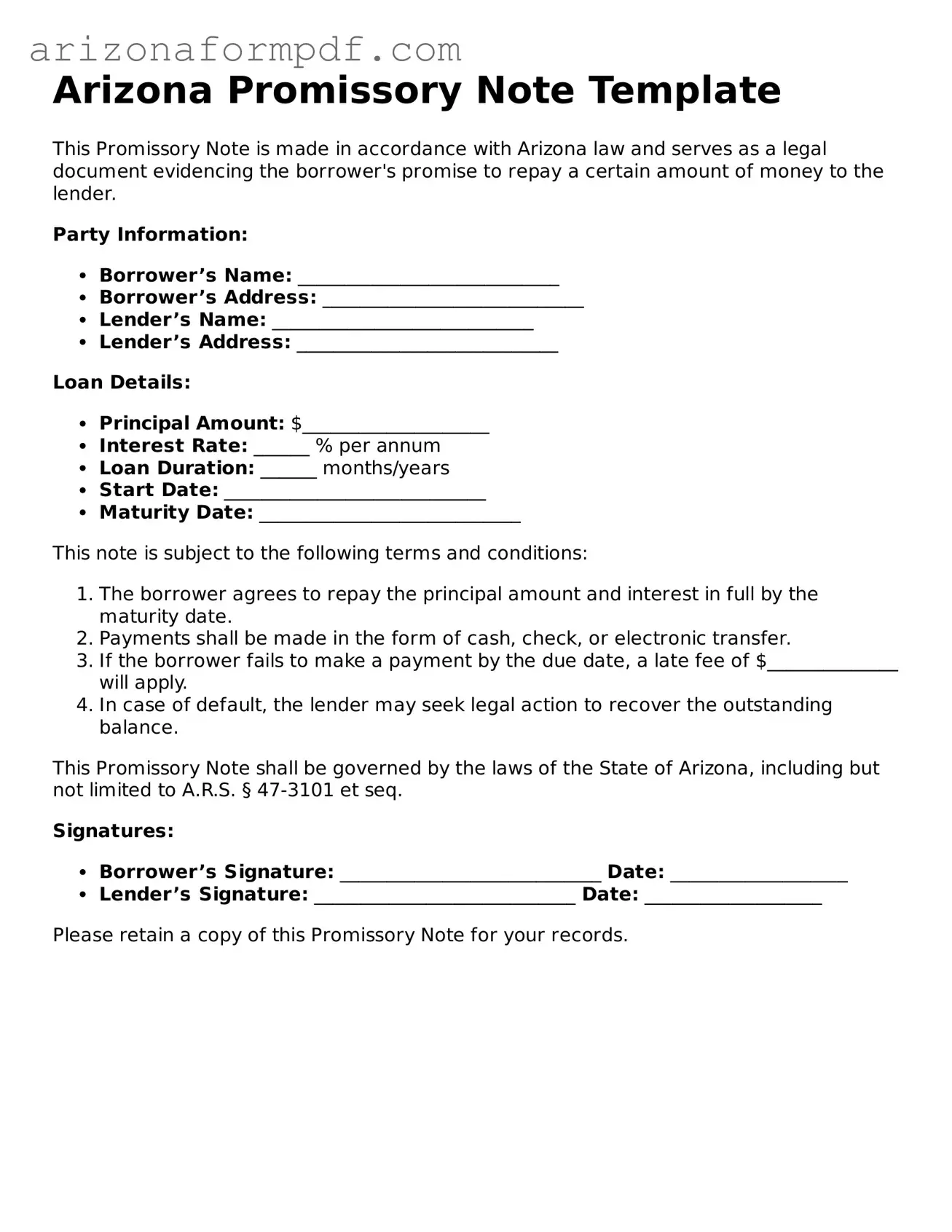The Arizona Promissory Note is similar to a Loan Agreement, which outlines the terms and conditions of a loan between a lender and a borrower. While a promissory note focuses on the borrower's promise to repay the loan, a loan agreement includes additional details such as the loan amount, interest rate, repayment schedule, and any collateral involved. This comprehensive approach ensures both parties understand their obligations and rights, reducing the potential for disputes later on.
Another document that shares similarities is the Mortgage Agreement. This legal document secures a loan by using real property as collateral. Like a promissory note, it involves a borrower’s commitment to repay the loan. However, a mortgage agreement also includes specific terms regarding the property, such as foreclosure procedures if the borrower defaults. This added layer of security provides lenders with assurance that they can reclaim their investment if necessary.
A Security Agreement is yet another related document. It is used when a borrower pledges personal property as collateral for a loan. Similar to a promissory note, it establishes the borrower's obligation to repay the debt. The key difference lies in the type of collateral involved. A security agreement details the rights of the lender to seize the collateral if the borrower fails to meet their repayment obligations, ensuring the lender has a claim to specific assets.
The Installment Agreement is also akin to a promissory note. This document outlines a borrower’s promise to pay back a loan in fixed installments over a specified period. While a promissory note may not specify payment frequency, an installment agreement clearly defines the payment schedule, including due dates and amounts. This structure helps borrowers manage their finances by providing a predictable repayment plan.
Next, the Lease Agreement bears similarities to a promissory note, particularly in the context of rent payments. In a lease agreement, a tenant agrees to pay rent to a landlord for the use of property. Much like a promissory note, it establishes a financial obligation, but it also includes terms regarding property use, duration of the lease, and responsibilities for maintenance. This ensures both parties understand their commitments and rights throughout the lease period.
The Loan Disclosure Statement also shares common ground with the Arizona Promissory Note. This document provides borrowers with essential information about the loan terms, including interest rates, fees, and repayment schedules. While a promissory note is a binding promise to repay, the disclosure statement is designed to inform borrowers, ensuring they fully understand the financial implications of their loan before signing.
A Forbearance Agreement is another document that can be compared to a promissory note. This agreement allows borrowers to temporarily pause or reduce their loan payments due to financial hardship. Similar to a promissory note, it acknowledges the borrower's obligation to repay the debt. However, it also outlines new terms for repayment, providing flexibility for borrowers while ensuring lenders still have a framework to recover their funds in the future.
Finally, the Guaranty Agreement is related to a promissory note in that it involves a third party who agrees to take responsibility for the borrower’s debt if they default. While the promissory note binds the borrower to repay the loan, the guaranty adds an additional layer of security for the lender. This document provides assurance that even if the primary borrower fails to meet their obligations, the lender has recourse to recover the funds from the guarantor.
